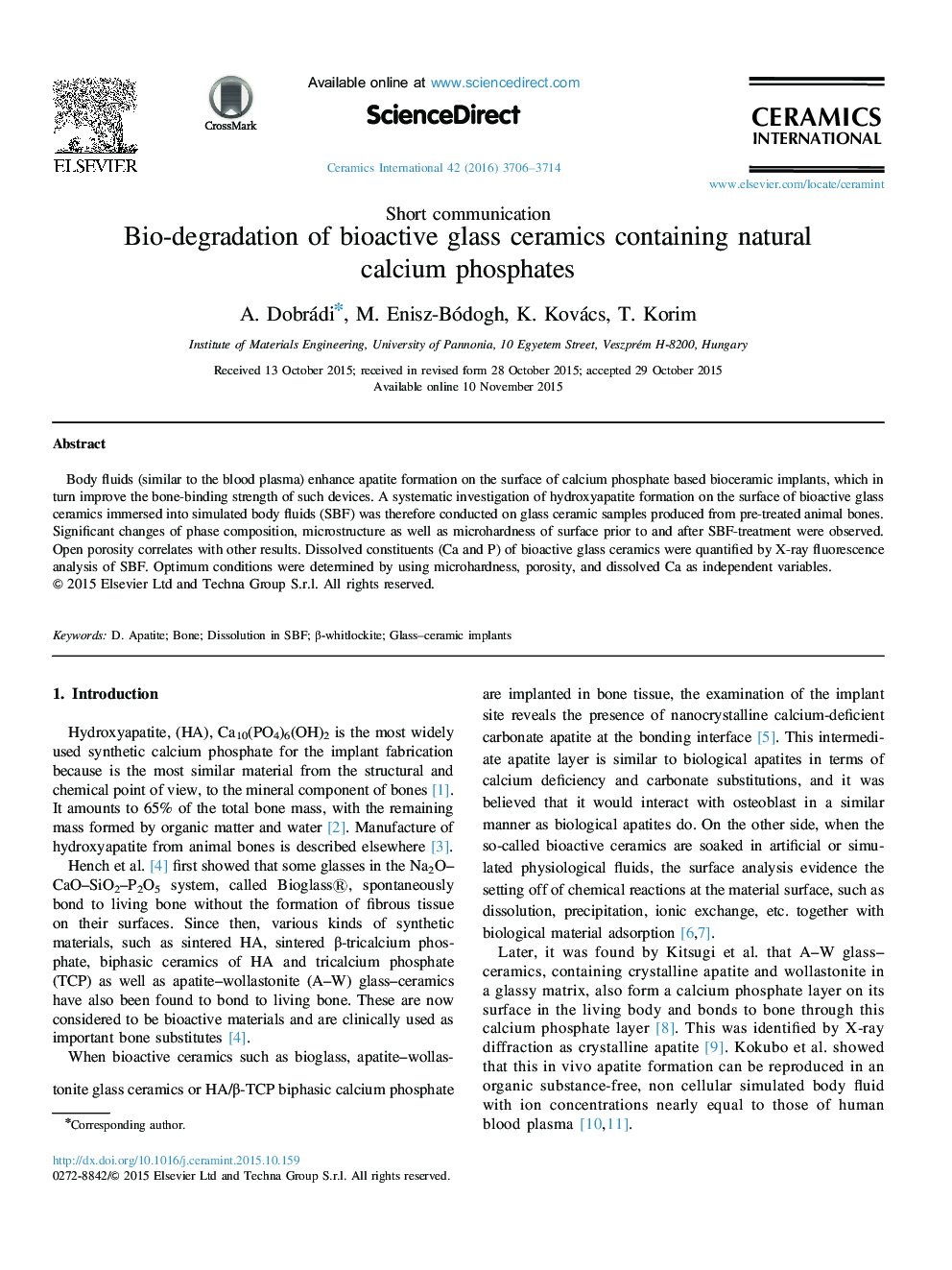| Article ID | Journal | Published Year | Pages | File Type |
|---|---|---|---|---|
| 1459603 | Ceramics International | 2016 | 9 Pages |
Body fluids (similar to the blood plasma) enhance apatite formation on the surface of calcium phosphate based bioceramic implants, which in turn improve the bone-binding strength of such devices. A systematic investigation of hydroxyapatite formation on the surface of bioactive glass ceramics immersed into simulated body fluids (SBF) was therefore conducted on glass ceramic samples produced from pre-treated animal bones. Significant changes of phase composition, microstructure as well as microhardness of surface prior to and after SBF-treatment were observed. Open porosity correlates with other results. Dissolved constituents (Ca and P) of bioactive glass ceramics were quantified by X-ray fluorescence analysis of SBF. Optimum conditions were determined by using microhardness, porosity, and dissolved Ca as independent variables.
